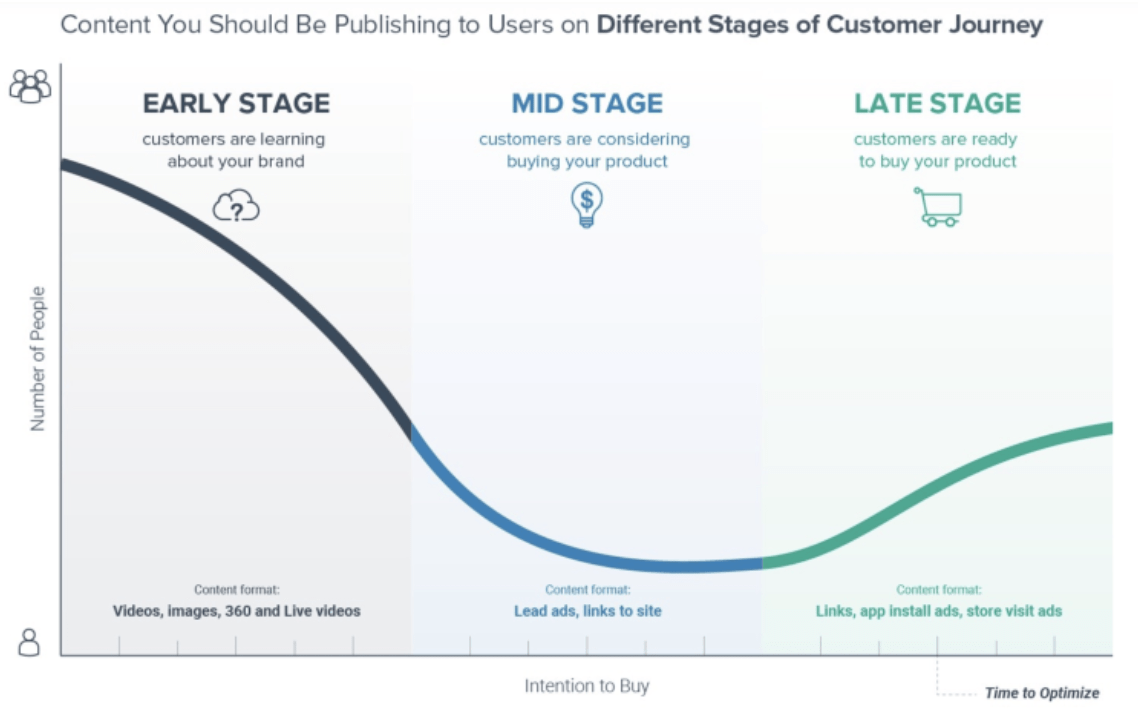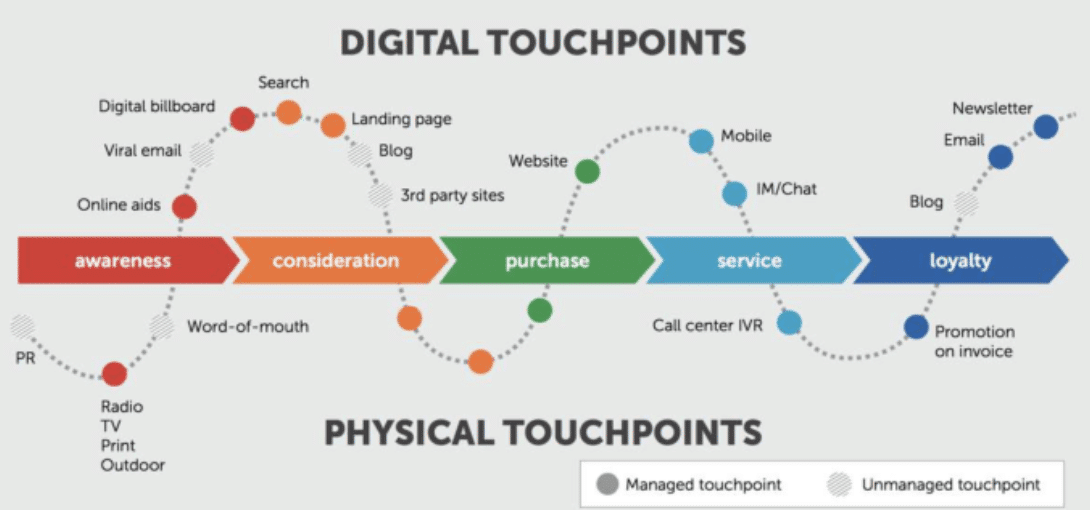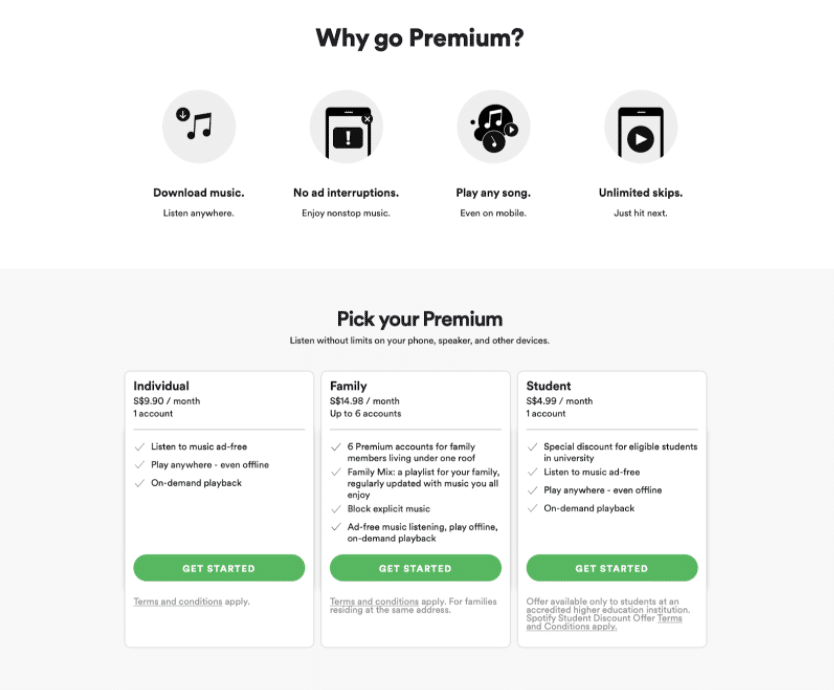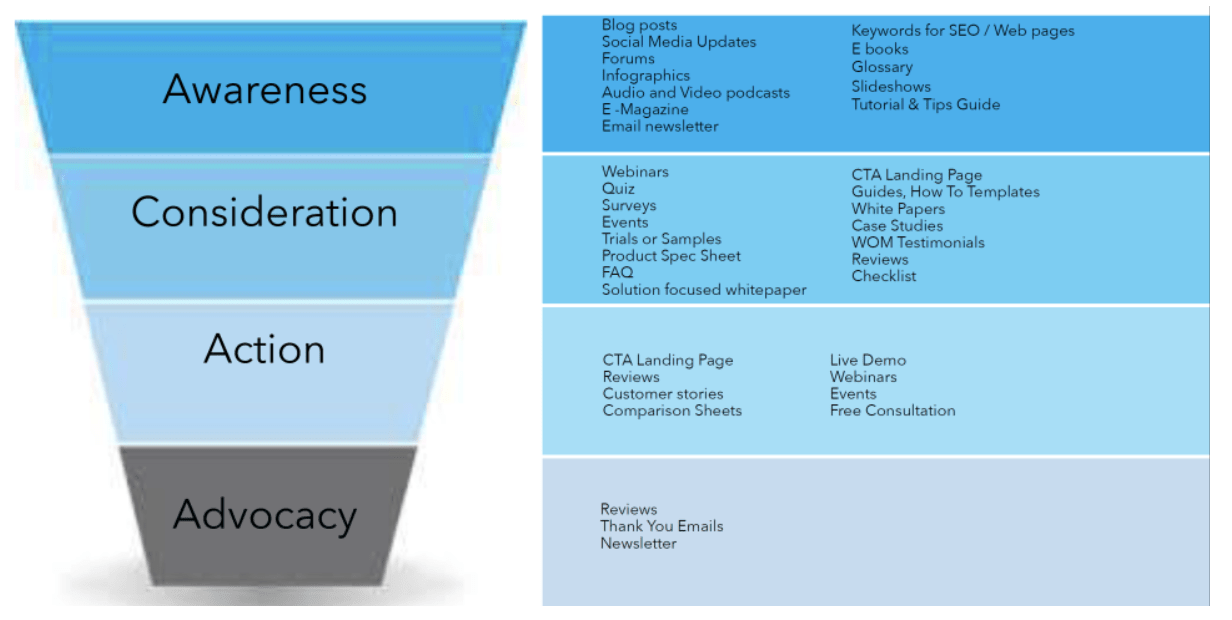7 Key Principles of Content Marketing Strategies
The Principles of Content Marketing
Be it Search Engine Optimisation (SEO), Social Media, or Email Marketing, content serves as the foundation for any number of different strategies. It’s challenging to pin down any single set of tactics that determines the success of a content campaign as content marketing has a multifaceted and interdisciplinary nature.
For any successful content marketing strategy and approach for organisation, it shares the 7 key principles of content marketing as outlined below:
- Documented Content Strategy
- Internal Content Marketing Champions
- User-first Mentality
- Publish Regular Quality Content
- User-centric content across the buyer’s journey
- Distribute across OSEP channels
- Clear ROI Attribution
By the end of this article, you will be able to have an overview and understand the 7 key principles of content marketing strategies.
If you’re completely new to content marketing, we would recommend giving this article a read first wherein we give a detailed breakdown of content marketing and why it is important.
1. Documented Content Strategy
With that being said, let’s dive into the five key things that one should include in their playbook.
a) Content Marketing Mission Statement of a Company
From the outset, the foundation and most essential part of every playbook would be the content marketing mission statement. It helps to ensure that your company is able to come up with quality content in the long run.
This section of the playbook would be where you can identify your audiences, establish your content marketing goals as well as outline the topics that would be highlighted subsequently in the playbook. Here are some questions to guide you along:
Who are your Target Audiences?
To better understand what are the types of content topics that would be of interest to the organisation’s targeted consumer group, an analysis of the audiences can be done.

Graph displaying the different stages of Customer Journey & the level of intent to purchase
Image from [socialbakers]
The intent of a customer and assets in response to that intent will be different at each stage of the customer journey.
For instance, in the early stages of the customer journey, customers are at the awareness stage and many interested seekers who are at the exploratory stage are seeking to learn more about your brand.
Moving forward, the mid-stage, also known as the consideration stage of the customer journey, is where prospects are evaluating the options available to them.
The final stage is the late-stage where prospects are ready to become a convert. It’s crucial at this stage to show them how and why they should be buying the brand’s services or products.
When establishing content marketing goals, one should aim to establish trust and rapport with their audiences and also deepen the loyalty with existing customers. An organisation can do so by creating useful content because it would increase the trust between them and its target audience.
Organisations should also aim to address a consumer’s pain points by asking themselves whether their content would benefit their consumers and help them to solve their problems. One way to express your brand’s core value proposition would be through content pillars.
Content Pillars
Other than helping a brand focus on relevant topics and creating a calendar that covers the essential topics, content pillars also serve as a guide to craft targeted content for a brand.
These are the steps taken to formulate content pillars:
- Define customer personas by researching on their daily activities and finding out which social media platforms they are active on.
- Repurpose and shift the target of your brand’s content by having different content types to appeal to different audience personas.
- Come up with specific hashtags to address and organise your audience to highlight a stronger sense of community.
- Create a content calendar to ensure the optimisation of content frequency.
b) Persona from the Core Audience

Image from www.pexels.com
Defined as a semi-fictional representation of an ideal customer, a buyer persona is created based on market research and data about the organisation’s existing customer base.
Some considerations to take into account when creating the buyer’s persona would be detailed profiling of customer demographics, the behaviour pattern of the current customers, and lastly what are the goals that motivate them to purchase a service or product.
Other pointers that you should include when building your persona would be:
- Profile (Name and Age)
- Vocational Experience (Job Role and Key Responsibilities)
- Circumstantial Information (Information about the Customer)
- Pain Points / Drawbacks
- Points of Resistance
- Solution
- Effective Messages (Style & Tonality of Voice that appeals to your target audience)
Check out our guide on how to create a buyer persona for your brand.
c) Buyer’s Content Journey Map

Buyer’s journey map in relation to the various digital & physical touchpoints
Another important thing to include in your playbook would be the buyer’s content journey map. Every typical consumer will experience the five stages of the buyer’s content journey – Awareness, Consideration, Purchase, Service, and Loyalty. But what exactly does each stage mean?
Awareness
The awareness stage of a buyer’s content journey is where consumers are experiencing a problem but doesn’t fully understand what is causing the issue.
Organisations should take the chance to pivot their attention to address a customer’s pain points, obstacles, and goals because by showing how the product can help them, they may eventually become a potential sales lead.
Consideration
After consumers are fully aware of the problems that they are facing, they would start seeking and comparing the available options and this is where organisations can find out how consumers perceive and compare their brand against its competitors. This stage is also known as the consideration stage of a buyer’s content journey map.
To drive potential consumers to purchase services or products, organisations should create content that is extensive, consequential, and relevant.
Purchase
Even though a consumer is in the purchase stage of a buyer’s journey, one should also ensure that the audiences don’t have any hesitations about purchasing your products or services.
As shown in the buyer’s content journey map, one of the digital touchpoints on the purchase would be websites and third party sites.
Taking Spotify’s website as an example, above their call-to-action button is the list of benefits of their subscription plan which caters to their different groups of audiences namely students, families, and individuals. Consumers would then be able to swiftly subscribe to Spotify after reading through the benefits as listed above the call-to-action button.

List of benefits above the Call To Action buttons that motivate audiences to take action screenshot via [spotify.com]
Service
The service stage is where organisations receive feedback about whether their products and services were satisfactory and of expectation. Customers may give feedback through various platforms like the call centre, chat, or instant messaging function on their social media platforms.
Organisations should also take note of the consumer’s likes, dislikes, and words they used for the feedback so that future improvements can be made.
Loyalty
Last but not least, the loyalty stage is the likelihood of reference and recommendation. To retain and drive customer loyalty, brands can roll out “We miss you” emails, newsletters, and promotions.
As extracted from research done by Frederick Reichheld from Bain & Company, a 5% increase in customer retention can produce more than a 25% increase in profits because, over time, a returning customer would purchase more from the company and that means lower operating costs to serve them.
d) The Tonality and Voice of the Brand or Business
This is an important aspect to every marketer as the tonality and voice of the brand or business is a way to articulate your brand voice and is also incorporated into the content of a brand’s website, social media campaigns, media, and public relations and creative design strategies.
By including this into the playbook, it ensures a consistent tone and voice across all the platforms that the brand owns.
e) Measure and Distribute the Content – Distribution Channels
By measuring and distributing the content, it counteracts the complications caused by the “spray-and-pray” approach that many brands have been using.
A predicament of this approach is that no matter how much content a brand puts out, they would have no idea how receptive those communities are to the messages and whether the right people are reached with the content that was distributed.
It would also be unknown to the brand whether the audience relationships made a meaningful impact on their business.
Hence, as important as it is to publish content, brands should first gauge the relative value of the various publishing platforms and channels accurately before sharing its content.
Benefits of Having a Documented Content Strategy
All in all, having a documented content strategy or a playbook helps one to align their business to their content marketing goals by focusing on the key priorities, topics, and conversations to the right audience.
It assigns resources to the appropriate people and processes and most importantly sets the right actionable metrics that optimises results. Documenting a content strategy also helps to determine and map out the appropriate content types to create, curate, and purpose the respective buyer’s journey.
2. Internal Content Marketing Champions

Image depicting a brainstorming session
Image via [pexels.com]
The key to creating quality content includes identifying the right content champions by picking individuals that spend the most time with your products and supports you in your business plans for content-marketing.
Here are some examples of the content champions for each department of an organisation.
| Departments | Likely Champions |
| Business & Product | Revenue Owner |
| Digital & IT | Platform Enablement |
| Finance | CAPEX/OPEX Investments |
| Customer Care & Sales | Customer Stories & Feedback |
| Comms and Brand | Communications & Brand guardian |
After identifying the content champions, organisations would have to anticipate any potential objections, pain points, or obstacles as some individuals might be skeptical about helping with content creation.
To defeat the skepticism, one can envisage how success would look for the content champions on an individual basis and convince them to join the organisation in the content creation journey.
Thereafter, the organisation can start collecting feedback from the content champions and then incorporate them into the development stages of the playbook. A content marketing executive council could also be formed from these champions so that they would feel more involved and participative.
No matter what content it is, always remember that it’s important to have a point of view from a subject matter expert who is looking out for the user.
Also, as the content champions spend time revising and improving the pieces of content that are used to reach out to the audience, the organisation should also make it easier for them to contribute. How so?
Well, they can simply provide a style guide, workflow, or even create a brief that outlines the challenges to solve. Here are some guiding questions to kickstart the brief:
- What are we doing?
- Who is the targeted audience?
- Why is this important?
- When do we need to do this?
Lastly, it would be great to keep an editorial calendar with content updates and progress as it fosters transparency and accountability while encouraging the content champions to contribute new ideas so that there would always be fresh content available.
3. User-first Mentality
In order to have a successful content marketing campaign, one of the key principles is to ensure that the content is audience-centric and that means that you would have to first understand how the piece of content is relevant to the end-user.
To make the piece of content relevant and helpful to the user, one needs to first identify triggers through qualitative keyword research. Let’s look at an example:
A news outlet just reported that a child’s success in school is tied to their eating habits. The audience must be wondering, “How can I ensure that my child has good eating habits so that they’ll do well in school?”.
This is where a brand can step in with content. By creating an interactive meal planner for the audience to plan meals one week ahead, it’s relevant and helpful to the audience that wants their children to have good eating habits.
Brands should also focus on the ‘benefit-first’ mentality instead of features in the content that they’re publishing. Why so?
By talking about the features only in the content, a brand is simply just differentiating their products from their competitors. However, if they talk more about the benefit that their customers would gain from their product or service, it would help the user to identify whether they need the product or not.
Taking the iPhone as an example, one of the features would be the calendar application and the benefit is that the consumers would be able to have their schedule available anytime, anywhere. It’s important to first target your audience with benefits, then support that with more features.
Brands should know when to share the content, the frequency of publishing in a day, and the content that is contextual for these micro-moments.
4. Publish Regular Quality Content
Publishing regular quality content not only keeps the consumers updated about a brand’s latest news and promotions. It also serves as a reminder that the brand is still in business and is ready to take on any orders.
However, one must also understand the importance of establishing a routine so that the users are aware of when they can check the page again for a fresh piece of content.
A brand can do so by framing and conditioning a user’s expectations which are postulated by the Pavlov Theory.
Pavlov Theory
The Pavlov Theory is a learning procedure that involves pairing a stimulus with a conditioned response. An example would be that when some consumers hear the word ‘sale’, it might generate their urge to shop as a response.
A brand can condition the audience about what to expect when they publish different genres of content on certain days of the week. But what exactly does it mean by ‘publishing different genres of content’?
Well, it simply means that on Mondays, a brand can usually post articles that are more ‘relaxed’ and on Wednesdays, the brand could post the ‘how-to’ type of videos to educate the consumers on certain subjects.
By using the Pavlov Theory and creating a routine, consumers may associate your brand with certain days of the week or even months.
For instance, one of the tech giants, Apple Inc., usually releases their new iPhones around the September and October period every year since 2011. As a conditioned response, fans of Apple might then start to anticipate the launch of the new iPhone whenever September and October approaches.
5. User-centric content across the buyer’s journey
As discussed earlier in the ‘User-first Mentality’ point, content pieces that are created must be relevant to the user and across the buyer journey. When a brand generates different types of content, it will appeal to customers in the different stages of the Buyer’s Funnel.

Image showing the different stages of the Buyer’s Funnel & the various types of content a brand can generate
Even though it might be too soon if one showcases the case studies or in-depth explainer videos in the awareness stage, it could be useful if it’s brought up in the consideration or decision stage of the buyer’s journey.
It’s also important to know and understand the different content assets that work well in the different parts of the buyer’s journey.
6. Distribute across OSEP channels
OSEP channels stand for the Owned, Shared, Earned, and Paid media and is a useful tool for planning how an organisation can use different forms of media to execute an integrated campaign as well as to attain its organisational goals.
It’s important to plan from an OSEP journey because the audience consumes content across the different channels. One can start by identifying and listing the different OSEP channels, as well as their pros and cons.
Owned Media
Owned Media is made up of content that is valuable, interesting, and informational for the brand’s audiences. Examples of owned media include :
- Websites
- Blogs
- Webinars
- Informational White Papers
- Brochures
Here are the pros and cons of owned media.
| Pros | Cons |
| Low Risk: Not feasible to shut down or remove when policies change | Slow: It takes time to build |
| Long-term Asset: evergreen content will draw audiences as long as it’s relevant | Not independent: It needs to work with the other types of media to[j20] work effectively |
Shared Media
Shared media are content that is shared by people on social networking platforms. Examples of shared media include :
- Facebook — The most effective for consumer-facing businesses.
- LinkedIn — For those working business-to-business.
Here are the pros and cons of shared media.
| Pros | Cons |
| High Trust: People trust their peers more than the media or an ad | Unreliable: It is hard to predict what will be shared in advance |
| Low Cost: The amplification of your content is tied to its quality | Unscalable: Simply producing more content does not always mean more shares |
Earned Media
Earned media usually comes in the form of media relations or publicity and the stories that are told from a third-party’s perspective are always perceived as credible and trustworthy. Some examples of earned media include :
- Media Coverage
- Fans Comments
- Reviews
- Testimonials
Here are the pros and cons of earned media.
| Pros | Cons |
| Authoritative: Vouched by a 3rd party authority | Unreliable: You can never guarantee a press mention or placement |
| Cost-Effective Reach: Leverage the size & trust of an established audience | Hard to Scale: Does not scale well to global efforts |
| Long-Term Benefit: Past press mentions, or placements can be referenced to create long-term SEO benefits | Expensive: PR program takes time and money to build |
Paid Media
Paid Media also means paid placement whereby the organisation promotes its brand through sponsored content. Examples of paid media include:
- Television & Radio Commercials
- Google AdWords (Search Engine Marketing)
- Facebook Advertising
| Pros | Cons |
| Scalable: More money equals more distribution | Low Trust: Skeptical of a paid placement or ad |
| Reliable: Guaranteed exposure for your message | Expensive: As reach increases, so does cost |
| Fast: Media can be placed in front of your audience immediately | Ephemeral: Once you stop investing in paid ads, the returns will drop off quickly |
Many marketers usually just focus on areas like the ‘Owned’ and ‘Paid’ channels which they are more familiar with. However, OSEP should be treated as an integrated journey.
An example of a case study that engages all the OSEP channels is Burger King’s ‘Google Home of the Whopper’ ad.
A paid 15-second TV ad spot features the phrase, “Ok, Google, what is the Whopper burger?” and upon hearing the prompt, any Google Home device within earshot told the listeners about the fast-food chain’s burger via the definition on Wikipedia.
Despite getting sabotaged by people who constantly changed the Wikipedia definition of the Whopper burger, the advertisement soon became a viral hit and Burger King earned themselves an estimated $135 million worth of media coverage.
7. Clear ROI Attribution
Every marketer needs to know that not all metrics are useful. If the metric is unable to help you understand your performance in a way that informs future strategies, no matter how good it makes you look to others, that metric isn’t useful. An example of a metric like that would be the vanity metrics.
Focus on Tracking Actionable Metrics
From these metrics, one can then consider, “What is the course action that I need to undertake?”.
Taking websites for an instance, you might want to get readers to read a few pages on the website per session as the chances of conversion will be greater if the interest level goes up. There’s a rule in marketing called the ‘Rule of 7’ whereby the visitor has to come across at least 7 pieces of content before they will sign up for your service or purchase your product.
Thereafter, you might want to find out the average time a person spends on a page as well as know how many times a particular page is viewed and shared. By knowing the frequency a page is viewed and shared, one can then fully optimise those pages that have the most views. The outcome will also determine whether it’s considered timeless content.
That being the case, you can employ techniques on making the visitors to the website stay longer. Some techniques include attaining the headline’s promise, creating more scannable content, reducing the loading time for your page, and have similar stories located at the bottom of the page as that encourages readers to read more similar content.
Parting Thoughts
You may have already been practicing some of these principles unknowingly and it’s fine even if you haven’t incorporated all the 7 principles into your content marketing strategy previously.
However, do note that it’s important to do an audit of which principles are missing so that you can try to include them for your future content marketing campaigns.
Try to experiment with new tactics as well so that you can weed out the ones that don’t work and integrate the successful ones into your content strategy.
Last but not least, we hope that this article has helped you to further understand the 7 key principles of content marketing. Even though these 7 principles may be recipes to success, one should still add in modifications and personal touches as all organisations are unique in their own way.
Ready To Learn More? Sign Up For Our Content Marketing Strategy Course
What you’ve just learned is part of something bigger.
Our Content Marketing Strategy course covers the six important phases of developing a Content Marketing Strategy and straddles both the art and science of content marketing.
This course is designed to help you better analyse your customers and competitors, embrace emerging trends in digital content creation, choose the right channels for promoting content, and measure the success of your content marketing efforts.
Interested to learn more than just Content Marketing Strategy? We have got you covered with our wide range of digital marketing courses taught in-person in Singapore or online.
At Equinet Academy, we cover all the 6 Core Modules of Digital Marketing that include:
- Digital Marketing Strategy
- Content Marketing Strategy
- Search Engine Optimisation
- Digital Advertising
- Social Media Marketing
- Digital Marketing Analytics with Google Analytics
Ultimately, this will lead to the learners attaining a Certified Digital Marketing Strategist Certificate.
Tom is a native Digital and Content Strategist with 20 years of experience across Tech, Banking, and Digital Advertising and Media verticals. He is also the lead trainer for Equinet Academy’s Content Marketing Strategy and Advanced Content Marketing Strategy course. In his spare time, Tom is actively in the start-up scenes providing pro bono advice to budding entrepreneurs.